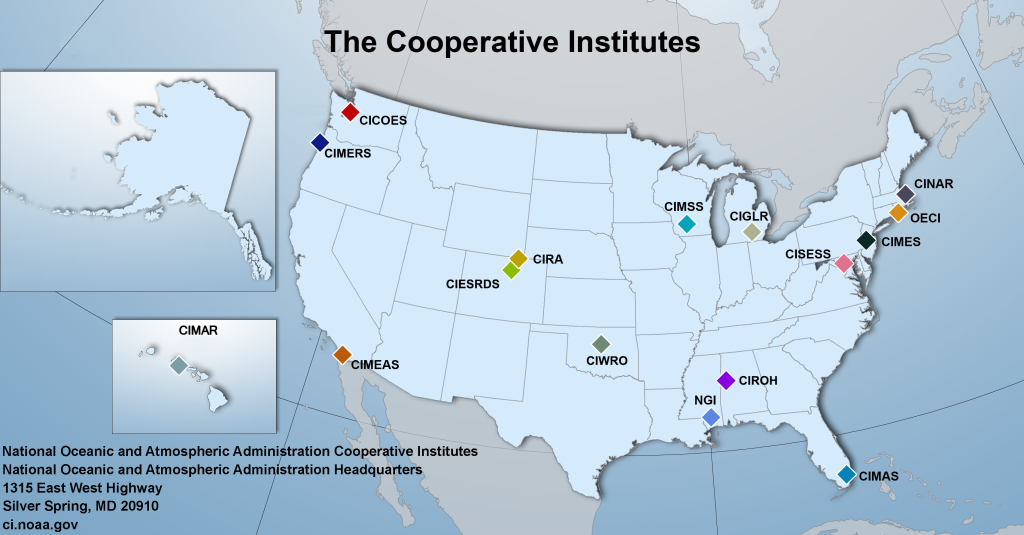Cooperative Institutes
Through these programs, NOAA Research provides the research and technology development necessary to improve the agency’s weather and climate services, solar-terrestrial forecasts, and marine services. These activities provide the scientific basis for national policy decisions in key environmental areas such as climate change, disaster reduction, air quality, non-indigenous species, and stratospheric ozone depletion.


